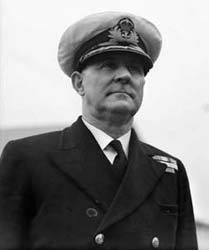Commander Morton Henry Moyes

Commander Morton Henry Moyes (1886-1981), Antarctic explorer and naval officer, was born on 29 June 1886 at Koolunga, South Australia, second surviving son of John Moyes, headmaster, and his wife Ellen Jane, née Stoward. Two brothers were John Stoward (1884-1972), Anglican bishop, and Alban George (Johnnie) (1893-1963), journalist and cricket commentator.
Moyes was educated at the Collegiate School of St Peter, Adelaide, and the University of Adelaide, graduating BSc in physics and mathematics in 1910, and representing the university at football and athletics. He was South Australian high and broad jump champion in 1906-08 and in 1909, while teaching at Townsville Grammar School, represented Queensland in the Australasian amateur athletic championships.
At university Moyes had been greatly impressed by his geology lecturer (Sir) Douglas Mawson and from Rockhampton Grammar School he successfully applied to join Mawson's Australasian Antarctic Expedition of 1911-14. He was meteorologist for the western base party under Frank Wild which was to winter on the Shackleton Ice Shelf; he had received a few days of instruction in meteorology in Hobart in November 1911. In November 1912 Moyes was left alone in the winter-quarters hut while a group, led by Wild, went on a sledging trip. The loss of a sled delayed the group's return and Moyes endured nine weeks of anxious solitude, sustained by his strong religious faith.
After returning to Australia in March 1913 Moyes became Headmaster of the University Coaching College in Sydney. He was recruited as a Naval Instructor at the newly established RANC in February 1914. Initially he specialised in mathematics but soon began to teach navigation and in 1915 spent some months in the cruiser HMAS Encounter, gaining practical navigating experience. He was promoted Senior Naval Instructor in January 1916 and his polar experience was recognised when he was made Navigating Officer of the Aurora which, commanded by Captain JK Davis, sailed from New Zealand to the Ross Sea in December to rescue marooned members of (Sir) Ernest Shackleton's Trans-Antarctic Expedition.
Moyes found it galling to be 'chained to an office' at the Naval College while others went to war. The Naval Board twice refused him leave to enlist in the Australian Imperial Force and rebuffed his plea for 'active service in the Navy' as his duties were considered of national importance. Finally, in October 1918 his resignation was approved for 31 January 1919, too late to achieve its purpose. On 11 January 1919 Moyes married Miriam Esther King at St James' Church, Sydney. He applied to rejoin the Navy and was accepted as an instructor lieutenant in December with seniority for previous service. For nearly a decade his postings alternated between time at sea in cruisers instructing junior officers and sailors and shore service at HMAS Penguin and HMAS Cerberus where he supervised schoolmaster and instructor officers; he was promoted Instructor Lieutenant Commander in 1920 and Commander in 1924.
In September 1929, at Mawson's request, Moyes was seconded to the British, Australian and New Zealand Antarctic Research Expedition, which was to assert British territorial claims in Antarctica by means of two voyages in the auxiliary barque, Discovery. Moyes hoped to sail as a ship's officer but Davis, again in command, believed he lacked appropriate training. He joined the scientific staff as Survey Officer, spending long hours operating a defective echo-sounder, taking sights and drawing charts, helping with tow-nets, and assisting Mawson in executive matters. The first BANZARE voyage, from October 1929 to April 1930, was not happy. Everyone became 'heartily tired of the bickering' between Mawson and Davis; Davis considered the crew and scientists formed 'two distinct parties' and was sceptical of the value of Moyes' work. However, the New Zealand meteorologist RG Simmers recalled Moyes as being 'very serious, precise and conscientious about his work' and 'a good steadying influence' on the younger expedition members. For private reasons Moyes did not undertake the second voyage in November 1930.
Resuming his naval career, Moyes spent nearly six years in HMAS Australia as Fleet Instructor Officer and became the Navy's first (acting) instructor captain in June 1941. Debarred from sea service by age and seniority, in November 1943 Moyes was appointed the first Director of Educational and Vocational Training at Navy Office, Melbourne, where he set up correspondence courses for those at sea and began a psychology section for vocational guidance. When his naval career ended in 1946 he became the Chief Rehabilitation Officer for the Commonwealth until 1951 and supervised the post-war training of some 11,000 ex-servicemen and women. In his long retirement he was an active President of the Naval Association of Australia and with rising public interest in Antarctic affairs became a minor celebrity as one of the last veterans of the 'heroic age' of Antarctic exploration.
In recognition of his three Antarctic expeditions Moyes was awarded Polar Medals in silver and bronze and a bronze clasp; he was appointed OBE in 1935. He was a fellow of the Royal Geographical Society and President of the Geographical Society of New South Wales in 1933-35.
Moyes was sturdily built, erect in bearing and with a direct gaze; his sanguine temperament stood him in good stead during his Antarctic expeditions. A widower without children, he died in Sydney on 20 September 1981 and was cremated after a service at St Andrew's Church, Roseville. He is commemorated by several Antarctic place-names.
Denis Fairfax


